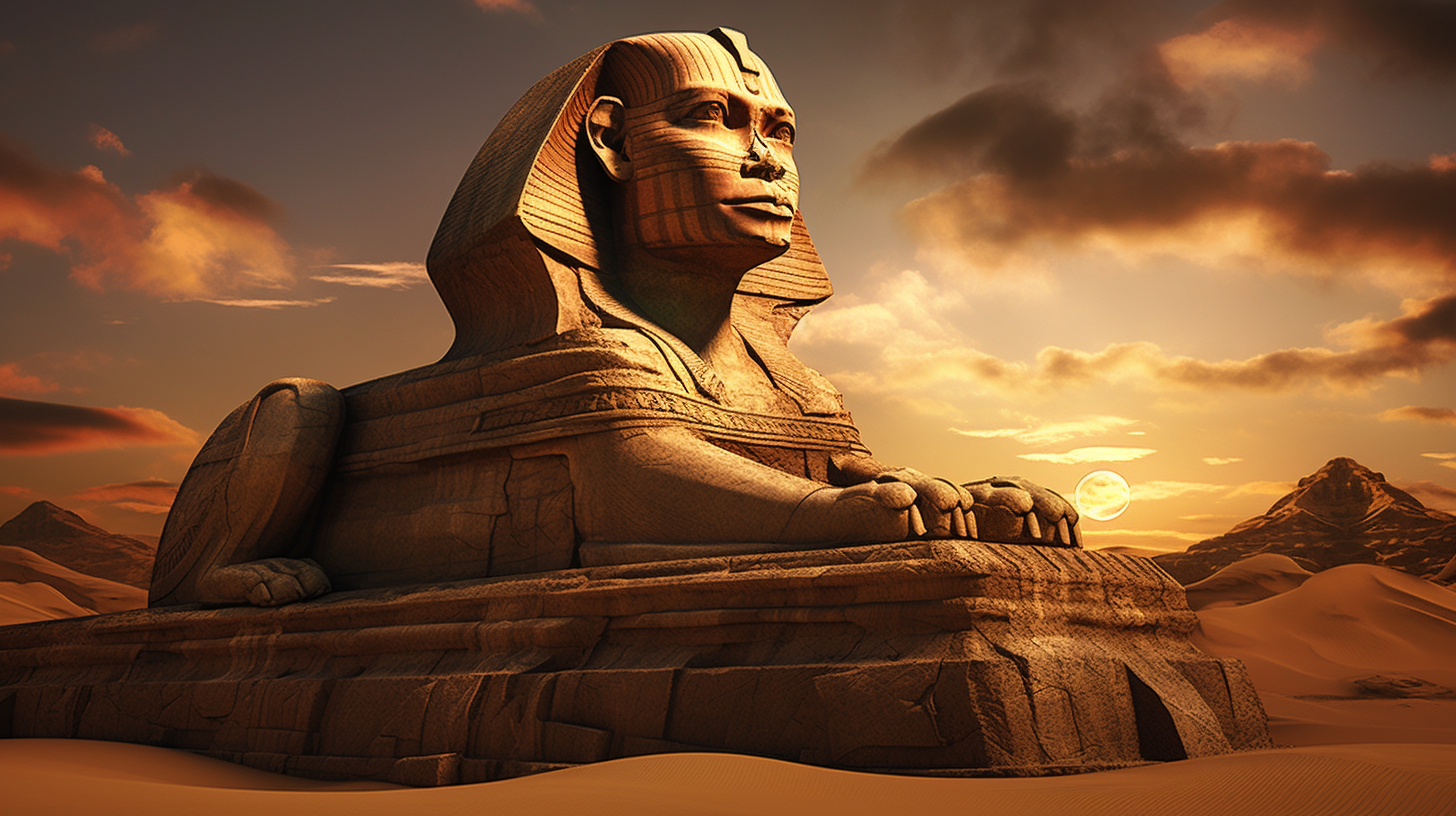The Sphinx, with its mysterious presence, stands as a remarkable symbol of ancient Egypt’s rich history, captivating the world with its enigmatic allure throughout the ages. Despite being a relic of a bygone era, this colossal limestone statue continues to evoke wonder and curiosity, fueling endless speculations about its origins and significance.
Constructed during the era of Pharaoh Khafre around 2500 BCE, the Sphinx, carved from the rocky terrain of the Giza Plateau, boasts a lion’s body and a human head, traditionally associated with its regal ruler. However, debates surrounding its creation persist.
Speculations hint at a time when the Sphinx might have existed before Khafre’s rule, originating from an earlier civilization. The erosion patterns on the statue hint at water erosion, suggesting a wetter climate in ancient times. This hypothesis challenges the conventional timeline, proposing an older, advanced civilization predating the dynastic Egyptians.

The Sphinx’s purpose remains a mystery; while some believe it functioned as a guardian of pharaohs’ tombs and Giza’s temples, others interpret it symbolically as a keeper of ancient wisdom or a celestial marker aligning with astronomical phenomena.
Linked to the Giza pyramids, the Sphinx’s eastward orientation suggests a deliberate alignment with the rising sun during the vernal equinox. This detail supports theories indicating its role in religious or spiritual ceremonies tied to the solar calendar.
Modern technologies like ground-penetrating radar have uncovered hidden chambers and tunnels beneath the Giza Plateau, igniting curiosity about possible undiscovered chambers below the Sphinx awaiting exploration and interpretation.
Despite centuries of scrutiny, the Sphinx continues to intrigue and provoke contemplation. Its timeless gaze encourages reflection on ancient mysteries and the limitless narratives of human history. As we endeavor to unravel the enigmas surrounding this ancient wonder, we are reminded of the endless quests to unveil the hidden tales of our ancestors and the everlasting fascination they hold.
